If you've been paying attention to B2B mobile trends, you know that Google announced in October 2017 that 50% of B2B search queries are made on smartphones, and they're expecting this number to grow.
In January 2018, you probably also noticed that business apps were the second-most popular category in the Apple App Store's ranking, accounting for almost ten percent of all active apps.
The amount of time we spend on our phones isn't lost on Google. Given the growth in mobile search traffic, it's not surprising to hear that their smartphone Googlebot has already been hitting websites to ensure that users get the most relevant content regardless of the device they're using.

To keep your site relevant—and to keep up with Google's latest indexing changes that will further emphasize mobile accessibility—I've put together five important mobile stats you should be aware of, as well as some insight into how your business can address the B2B mobile shift.
5 mobile user experience developments and what to do about them
If you're going to start focusing on mobile UX over desktop, you should know why you're doing it.
Below is some helpful research and data on mobile users that should serve as hard evidence for starting to shift your focus, even gradually. I've also provided some tips for how to take action to start better serving your mobile users.
1. Google will start migrating sites to mobile-first indexing
Google announced in March 2018 that they'll start indexing and ranking the mobile versions of pages over desktop versions.
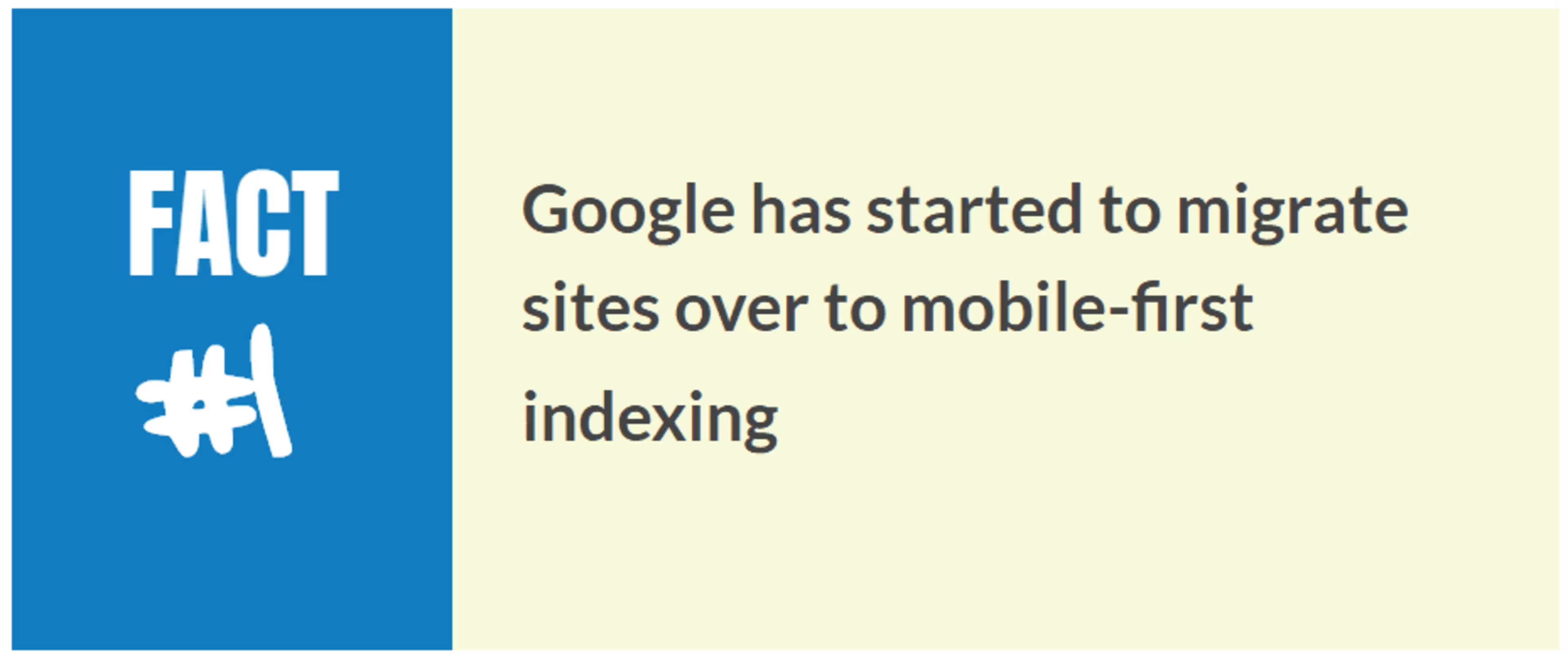
Google encourages sites not to panic over this indexing change, as they'll notify site owners via Search Console when their site is migrating to the mobile-first experience.
Key takeaway: Google wants to make sure your website's desktop and mobile content aren't drastically different, as this will cause negative user reactions. The index formula isn't mobile-only indexing ... yet.
What you can do now: Check out Google's best practices for mobile-first indexing here.
2. Google will use page speed as a ranking factor for mobile searches starting July 2018
Page speed is top-of-mind for Google because it's directly related to user experience. As Google states: “People want to be able to find answers to their questions as fast as possible."
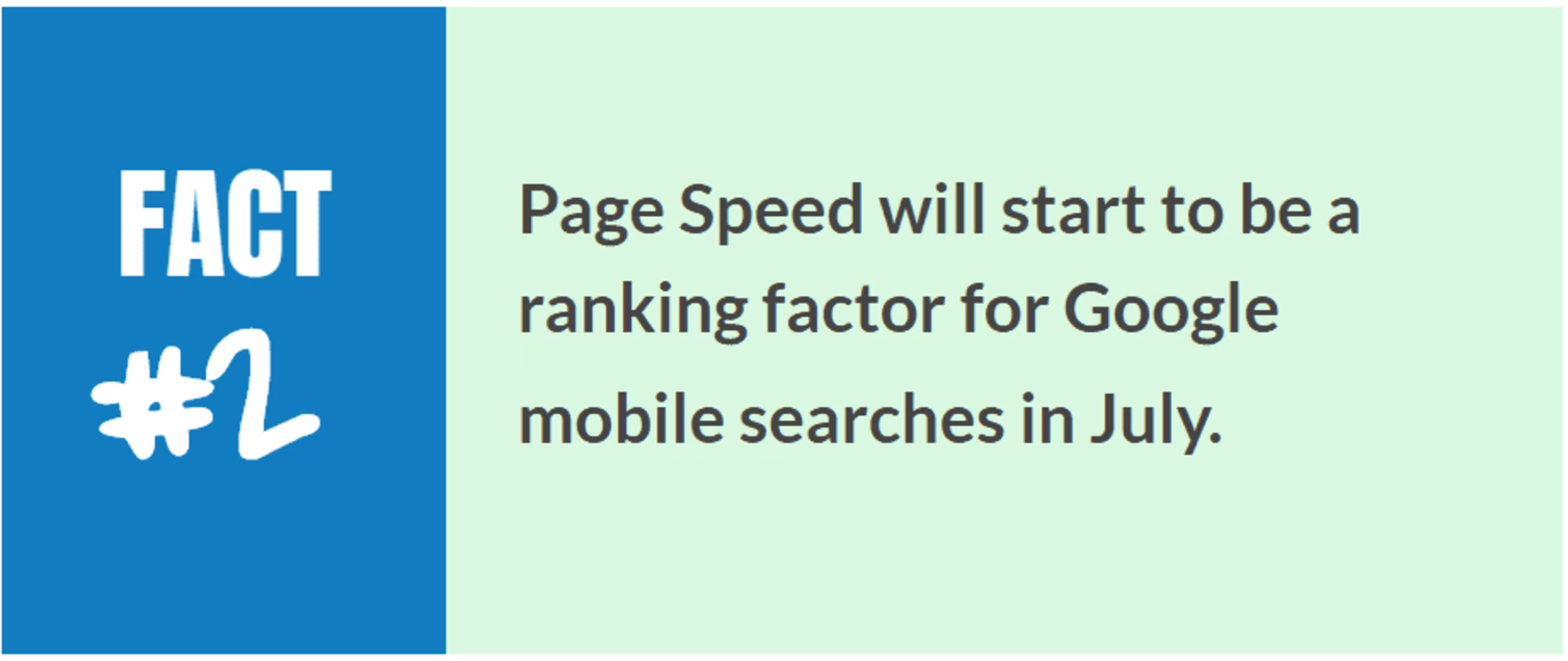
Google already uses page speed to rank sites, but that metric was previously limited to desktop searches. Given that mobile searchers are looking for answers on-the-go, it's not surprising that page speed would also affect the usefulness of mobile searches.
Key takeaway: My bet is that mobile searchers are probably less patient than those sitting in front of a laptop. If page speed was or is a concern for the desktop version of your site, start looking into ways you can improve mobile speed as well.
What you can do now: Take advantage of some of the tools Google suggests using to get a better idea of how your site performs on mobile. Look at places where mobile users leave your site to find possible pain points in your mobile UX.
3. Most mobile traffic is now occurring on 4G instead of 3G
The good news for your page speed is that a 4G connection, as opposed to the slower 3G, is now considered the standard on a global level.
For a while, the recommendation for testing your mobile site was to look at site load stats using 3G, as much of the world still had a slower connection. However, Google recently announced that most mobile traffic is now occurring on 4G instead of 3G.
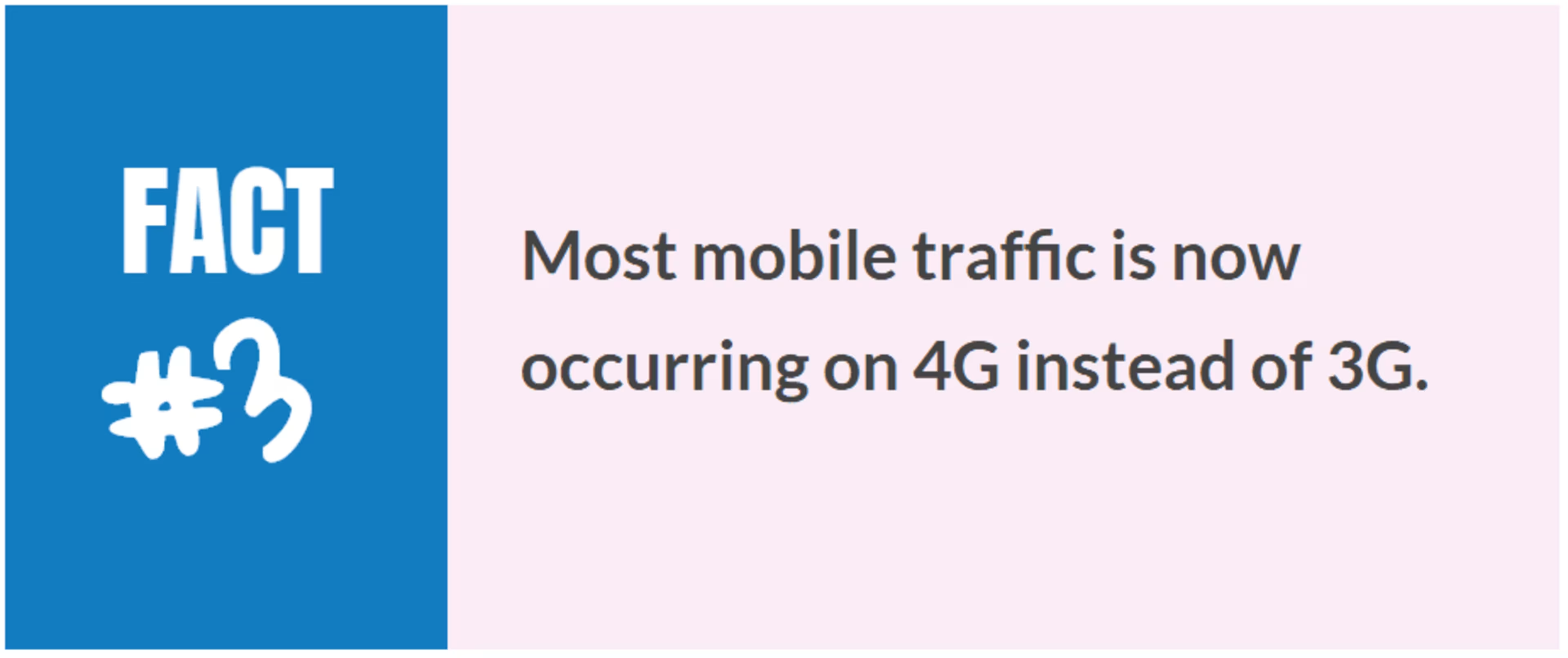
Key takeaway: Testing your mobile site with a faster connection will give you a bit of a boost in terms of page speed, but you shouldn't bank on that shift to completely make up for slow load times.
What you can do now: Get a handle on the metrics you need to measure. A lot of factors affect page speed, including some you can't control, such as a user's connection strength and the device they're using.
Factors that are under your control are things such as load time, number of requests, page weight, etc. To start improving those back-end factors, we recommend first taking a look at your page speed index metric, which is reported in milliseconds and measures how quickly a page's contents are visually populated.
Depending on your needs, you can hire a mobile app development company and/or a UX design agency for help with optimizing your mobile site. Check out our hiring guides for mobile app development companies and UX design agencies to determine the best fit for you.
4. Mobile users will leave a site that takes more than three seconds to load
You're going to need as many speed boosts as you can get since, according to Google, the majority (53%) of your mobile visitors will leave a page that takes longer than three seconds to load.
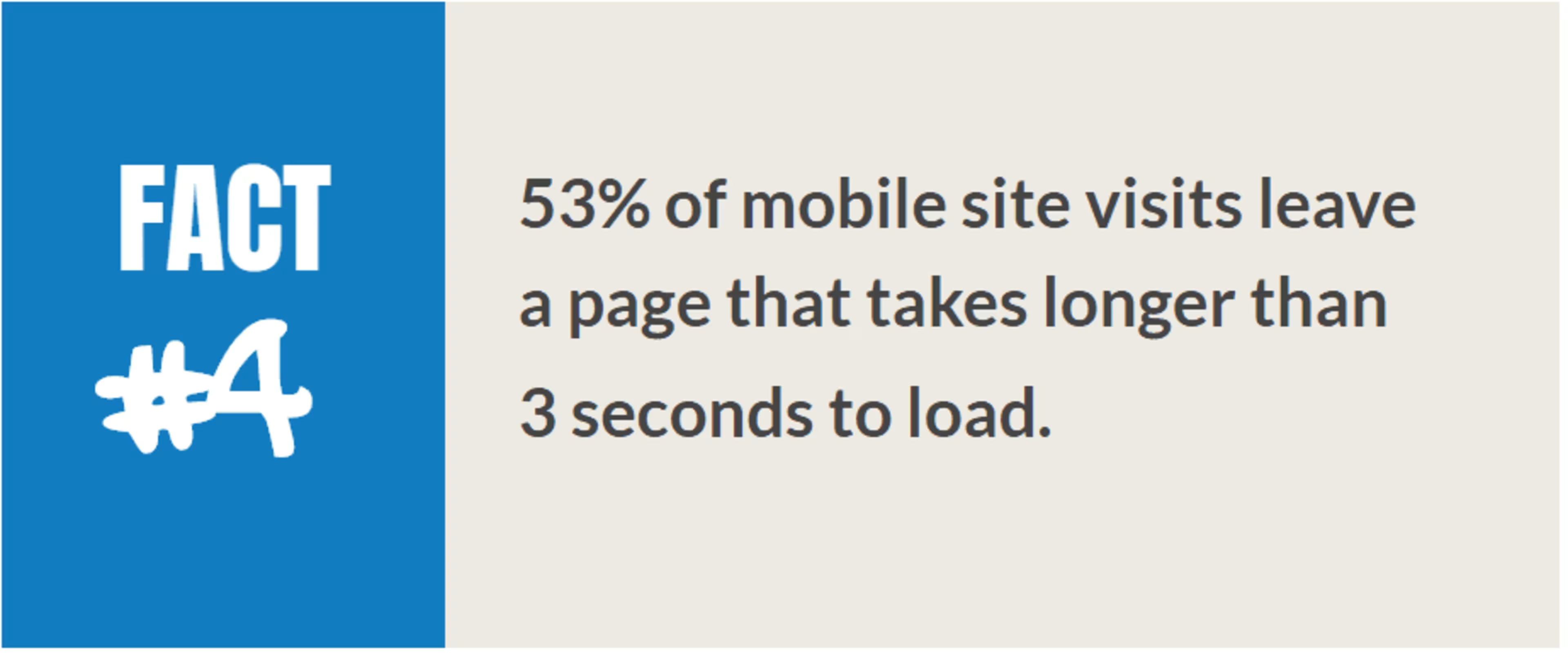
Google also found that as page load time increases from one second to six seconds, the probability of bounce increases 106%.
Key takeaway: You need to increase your mobile page speed to keep your mobile visitors on your site, not to mention coming back to it. You should work toward three seconds or less, but anything under five seconds is still considered good. However, if you're hitting eight seconds or more, you have a poor load time on your hands.
What you can do now: One quick measure to acknowledge slower load times is implementing a unique, branded loading icon. This will signal to users that a page is working—as well as display something that might capture their interest—which could decrease the likelihood that they'll abandon your page.
Another way to quickly decrease page speed index is to compress your image files. Make sure to scrutinize above the fold assets and remove any clutter, such as a carousel, that causes the page to take longer to load.
Have your developer make sure that only critical page assets, such as your logo or value proposition, are marked to load before other non-critical assets. As you move the needle on page speed index, make sure to review the impact your changes have on goal completions in your conversion funnel.
5. The average page speed index of B2B software sites on a mobile 4G connection is 7 seconds
Capterra recently conducted an analysis of over 125 B2B software company websites. Using WebPagetest, we found that the average page speed index on a mobile 4G connection for these sites was seven seconds.
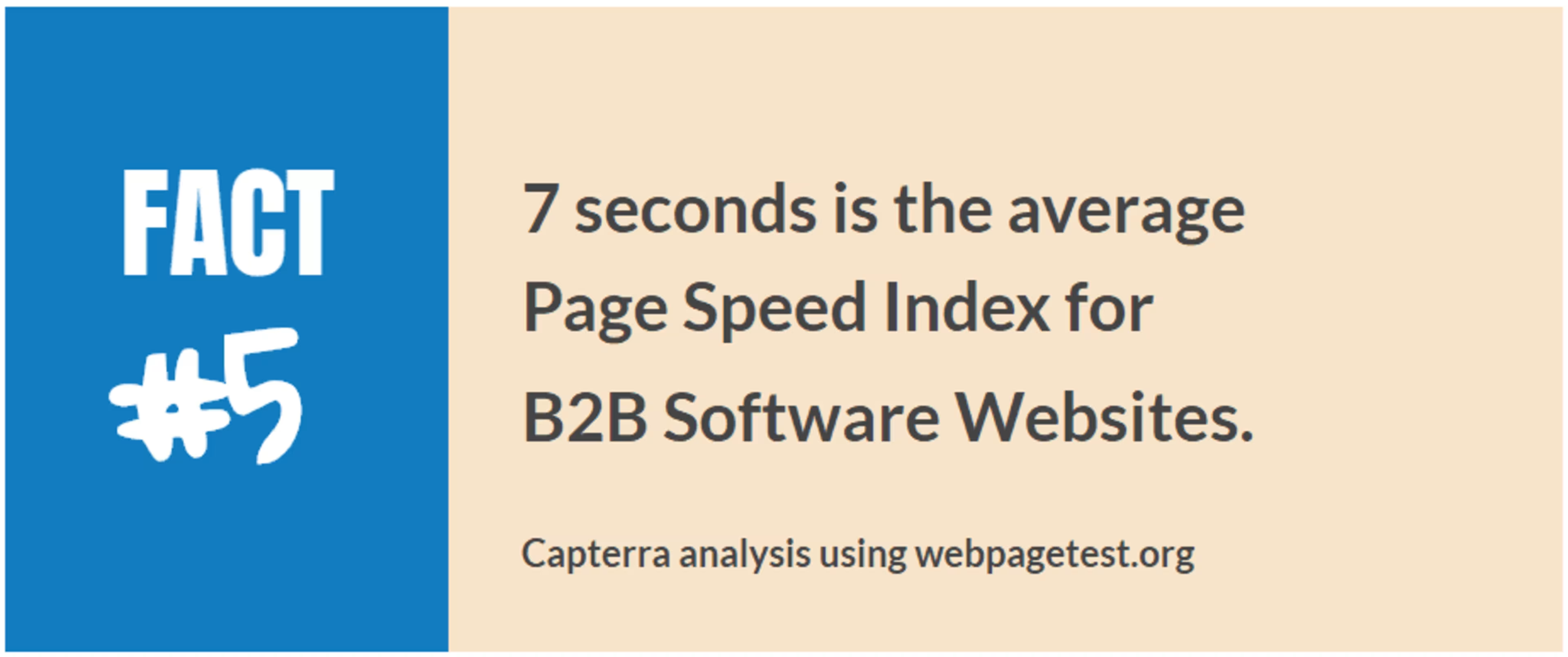
Key takeaway: Most B2B software companies have a lot of work to do to improve their page load time. Seven seconds is well over the goal of under three seconds, increasing the likelihood of bounce to over 100%. Given these numbers, it's likely that most B2B software sites are losing out on quality prospects.
What you can do now: Start measuring your page speed metrics to pinpoint areas where you can improve.
Below, I've provided a few tools you can use to start collecting that data. I should note now that a lot of these tools offer data that's likely more useful to developers, so don't get overwhelmed if you don't understand what you're seeing—pass those numbers along to your tech team for some insight.
Some helpful tools for measuring page speed:
WebPagetest—This tool has long been a popular, reliable testing tool. It provides a variety of test options and metrics, including speed index, requests, bytes, and load waterfall.
Google has a handful of great tools for measuring page speed:Test your mobile speed—Benchmarks your page against industry data, as well as provides grades and a report with a breakdown of possible improvement areas.. Speed scorecard—Allows you to compare against competitors and calculate estimated revenue loss from slow loading.. PageSpeed Insights—Shows the quality of your page speed and optimization. This tool pulls from the Chrome User Experience report for FCP and DCL.. Chrome Developer Tools—Available by going to "Inspect" in Chrome and then "Network." Here you can toggle to see your web page on different devices as well as record your page load as it renders elements.
Pingdom—Offers a range of website monitoring tools, including page speed monitoring, so you can identify areas that affect your prospects' experience. Bonus: They offer a free trial.
Lighthouse—A great tool for developers that runs a series of audits and then generates a report on how well your page performed. Developers can use the report to identify areas to improve.
Are you prepared for a mobile business world?
Now that you're equipped with some hard numbers and useful tools to help you improve your mobile UX, get out there and make the internet a better place for mobile users!
While Google's emphasis on mobile ease of use won't immediately be rolled out to all sites, there's no harm in getting ready for that change.
Your site visitors are already conducting a lot of their searches on mobile platforms. The longer it takes for you to get your mobile experience up to par, the more leads and prospects you're going to miss out on in the meantime.
Is your site ready to handle mobile traffic? How is your B2B organization preparing for the ever-increasing emphasis on mobile? Let me know in the comments below!